Have you ever been to an Italian restaurant and see a shelf with several colorful bottles on it? Seemingly obscure bottles that the bartender reaches for at the end of one’s meal, amidst feelings of agita. It is those bottles that contain a marvel of traditional liqueurs called amaro. If you ask someone what an amaro is though, you’d be hard-pressed to get one solid definition. There are however three main components: an alcohol base, a bitter agent and flavoring. It’s the bitter part that makes for a great finish to any meal. Our friend Brian Ricci of Philabundance has cooked up a few beer pairing dinners at COOK, so when he suggested an all-amaro-all-night dinner, we were all in!
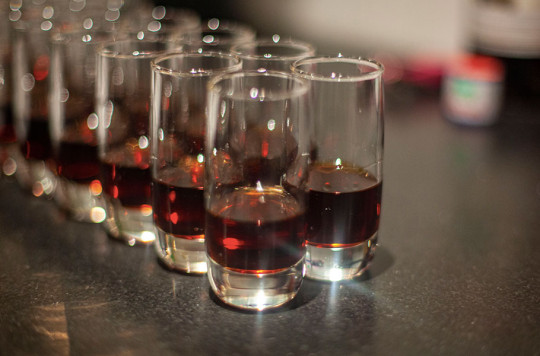 There are no hard and fast rules for amari making, so you will find ones that are sweeter than others. Some are more herbaceous. There are also bitter forward entries. The selections from our amaro pairing dinner definitely ran the gamut, starting with one that was reminiscent of an off-dry sherry and finishing with an offering that might elicit thoughts of a bitter Coca-Cola.
There are no hard and fast rules for amari making, so you will find ones that are sweeter than others. Some are more herbaceous. There are also bitter forward entries. The selections from our amaro pairing dinner definitely ran the gamut, starting with one that was reminiscent of an off-dry sherry and finishing with an offering that might elicit thoughts of a bitter Coca-Cola.
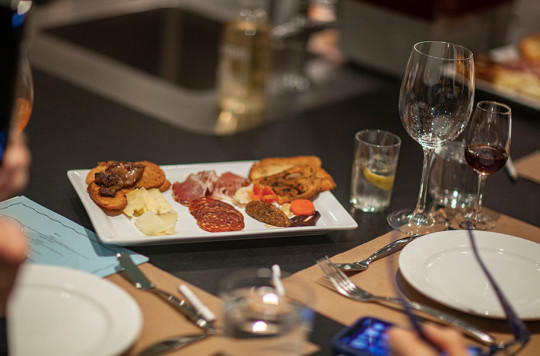 The first amaro of the night comes from the Trentino region of Italy. Cappelletti Pasubio is slightly viscous and offers notes of ripe berries and a smoky undertone. It’s the sweetness that made it a willing partner to the cheese plate. Brian’s charcuterie plates featured smoked coppa, chicken liver toast, salame mole, Pecorino Camomilla, Ottanta al Tartufo, violet mostarda, walnut mostarda, pickled vegetables and fennel raisin jam.
The first amaro of the night comes from the Trentino region of Italy. Cappelletti Pasubio is slightly viscous and offers notes of ripe berries and a smoky undertone. It’s the sweetness that made it a willing partner to the cheese plate. Brian’s charcuterie plates featured smoked coppa, chicken liver toast, salame mole, Pecorino Camomilla, Ottanta al Tartufo, violet mostarda, walnut mostarda, pickled vegetables and fennel raisin jam.
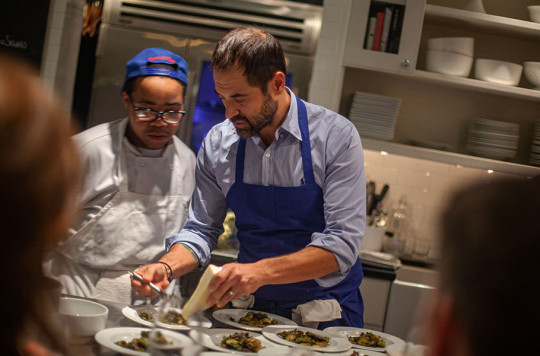 If you aren’t familiar with Philabundance and its Community Kitchen, here’s a crash course. With Brian as its director, PCK works with people from no-to-low income homes. As the PCK website says, not only do participants walk away with knife skills, but also life skills. When Chef Ricci visits us, he’ll usually bring one of his students along. Haneef joined him for this class, handling a good portion of the plating – a crash course in plating multi-step dishes like this mushroom gnocchi with fall pesto, wild mushrooms and shaved pecorino. You wouldn’t know this was his first time in a setting like COOK because he handled himself like a pro. Pairing up with the gnocchi was Philadelphia Distilling’s Vigo Amaro. Distilled in Northern Liberties, this approachable amaro is perfectly balanced and earthy with a long finish.
If you aren’t familiar with Philabundance and its Community Kitchen, here’s a crash course. With Brian as its director, PCK works with people from no-to-low income homes. As the PCK website says, not only do participants walk away with knife skills, but also life skills. When Chef Ricci visits us, he’ll usually bring one of his students along. Haneef joined him for this class, handling a good portion of the plating – a crash course in plating multi-step dishes like this mushroom gnocchi with fall pesto, wild mushrooms and shaved pecorino. You wouldn’t know this was his first time in a setting like COOK because he handled himself like a pro. Pairing up with the gnocchi was Philadelphia Distilling’s Vigo Amaro. Distilled in Northern Liberties, this approachable amaro is perfectly balanced and earthy with a long finish.
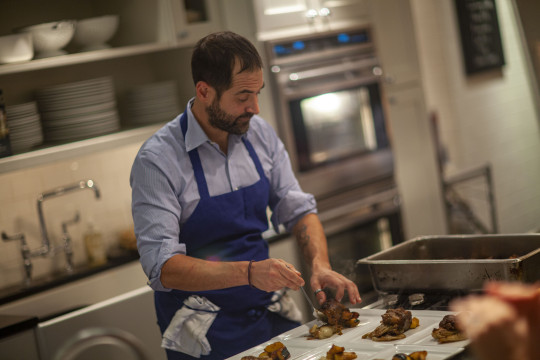 It is always interesting to hear what the group’s favorite dish is. In the case of this class, the overwhelming favorite was Brian’s braised lamb shanks. Falling off the bone – as they should be – and served with roasted fennel tossed in Cynar (an artichoke-based amaro!) and autumn squash, there were many wanting to shed decorum and lick their plates. It almost seems appropriate that the class’ preferred food item was being enjoyed with Chef’s go-to amaro, Santa Maria Al Monte. Born from the hands of the monks at the Santa Maria monastery near Florence, this quintessential amaro uses 36 different herbs and vegetation from 4 different continents. The outcome is a solidly bittersweet beverage that works to cut the richness of the lamb.
It is always interesting to hear what the group’s favorite dish is. In the case of this class, the overwhelming favorite was Brian’s braised lamb shanks. Falling off the bone – as they should be – and served with roasted fennel tossed in Cynar (an artichoke-based amaro!) and autumn squash, there were many wanting to shed decorum and lick their plates. It almost seems appropriate that the class’ preferred food item was being enjoyed with Chef’s go-to amaro, Santa Maria Al Monte. Born from the hands of the monks at the Santa Maria monastery near Florence, this quintessential amaro uses 36 different herbs and vegetation from 4 different continents. The outcome is a solidly bittersweet beverage that works to cut the richness of the lamb.
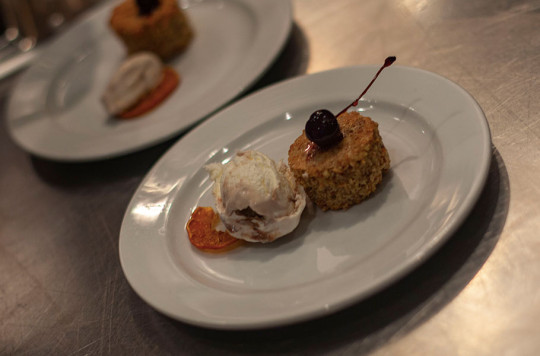 Dessert is typically where amaro falls in the timeline of a meal. Finding one that fits your tastes may be a difficult endeavor, but starting with Amaro Nonino is a good place to start. The Nonino is an elegant sipping option for those that want a smooth finish. The barrel-aging gives some red wine-esque elements to it. To finish the night and to accompany the Nonino, we were treated to an almond cake with chocolate cherry semifreddo.
Dessert is typically where amaro falls in the timeline of a meal. Finding one that fits your tastes may be a difficult endeavor, but starting with Amaro Nonino is a good place to start. The Nonino is an elegant sipping option for those that want a smooth finish. The barrel-aging gives some red wine-esque elements to it. To finish the night and to accompany the Nonino, we were treated to an almond cake with chocolate cherry semifreddo.
Keep an eye out for Philabundance’s new headquarters, and if you’d like to get involved and make a donation, visit philabundance.org!
Back to Blog



